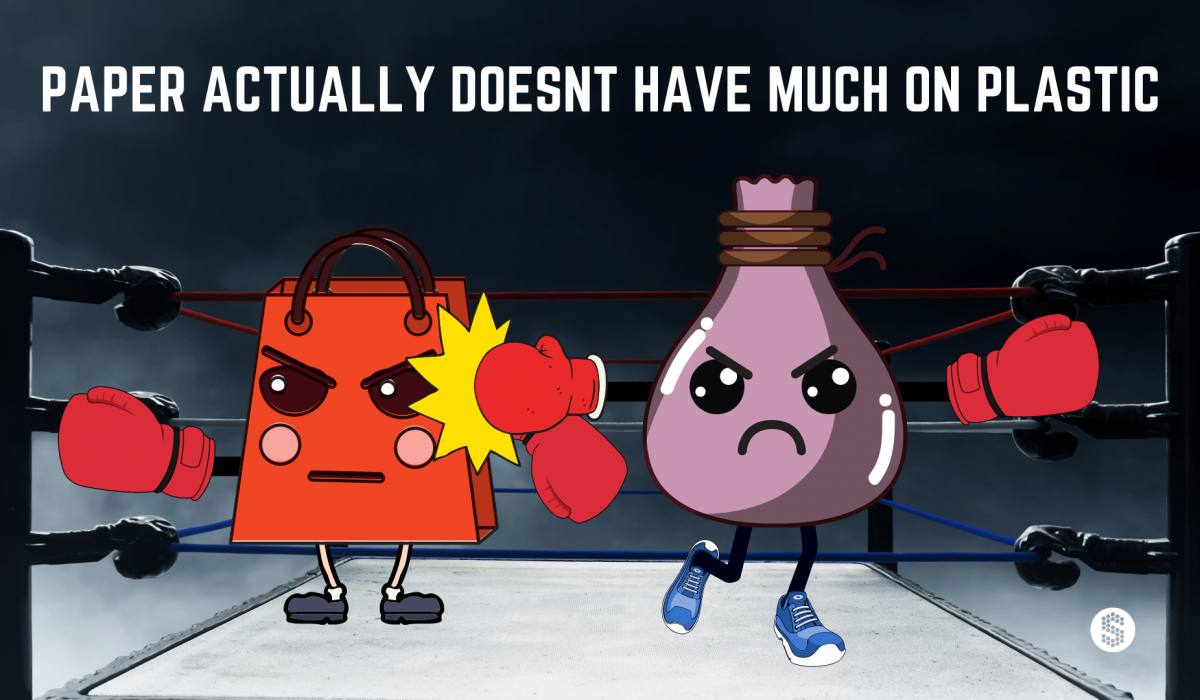Paper or Plastic? The environmental truths might surprise you...
We all know the story. The on-going and what seems never-ending debate of paper vs plastic; and more often than not, the answer is always paper. When faced with the choice, it’s important not to get lost in the greenwash. Naturally, we focus on the finished product, what we see in front of us. What most of us don’t consider is the environmental consequences of the entire lifespan, from the manufacturing process to decomposition. The environmental impacts of both may surprise you.
Major Environmental Impacts
Pollution
Considering the production of paper removes trees from absorbing carbon dioxide from our planet, the manufacturing process of paper contributes to 80% more greenhouse gases and 50 times more water pollutants than plastic. Paper not only adds waste to our world, but it also eliminates our greatest resource for reducing pollution and making our air breathable.
Energy Consumption
Both paper and plastic require petroleum to produce. However, the production of paper consumes four times as much energy to manufacture than plastic. That’s 2% of the world’s overall carbon footprints; not to mention the energy consumed during the transportation of heavy paper pallets compared to the lighter weight of plastic.
Water Consumption
The water footprint of both paper and plastic is significant. It takes at least twice as much water to produce a plastic water bottle as the amount of water contained in the bottle itself. Paper isn’t much better, requiring 2-13 liters of water to create just one piece of A4 paper.
Waste Generation and Litter
Seeing a plastic bag fly down the street is not unusual with the Australian Government spending in excess of $4 million every year removing plastic bags from our daily environments. Plastic waste can also place great danger on nature and the health of wildlife who mistake it for food. While plastic contributes to littering issues, 80% less waste is generated during the manufacturing process.

Decomposition
One of the biggest environmental misconceptions is that paper breaks down faster in landfill when under ideal conditions. Well, it can but landfill conditions are never and never will be ideal. Paper buried under piles of waste with no exposure to light, air or oxygen means it will break down at the same rate as plastic, that is, between 400 and 1000 years. A paper bag is heavier and more space-consuming than a plastic bag. However, as paper is recycled at a higher rate, saving space in our landfills is seen as less of an issue.
Recyclability
Once paper is collected, sorted by a machine, sorted by hand to pick out all non-paper items, washed, turned into sludge, purified, poured, flattened, dried, coloured/bleached, cut and packaged, it is ready to go! Sounds like a lot of big machinery, energy use and resources, right?
It takes 91% less energy to recycle 0.5kg of plastic, than to recycle 0.5kg of paper. Although, it can be a procedure to do so as soft plastics are not meant for our kerbside bins in Australia; just yet. For our true environmentalists, RED Group have established a post-consumer soft plastics recycling project called REDcycle. Simply keep aside all your soft plastics at home and dispose in over 1,850+ soft plastic bins in supermarkets Australia wide. Once collected, REDcycle transports plastics to REPLAS who transform these into recycled goods such as park benches.
Data shows that retail bans on plastic bags may be causing more harm than good! Luckily, our Armour Padded Mailer Bags are made with 100% recyclable LDPE4, with each bag containing a minimum of 15% recycled content. Sancell Armour Padded Mailers are approved for recycling through the REDcycle program.
We need to be more conscious of the resources and materials we use and how to dispose of them. Understanding the environmental consequences of manufacturing materials will help us make informed decisions when selecting resources; and encourages us to feed materials back into the economy, ultimately reducing waste to landfill.
